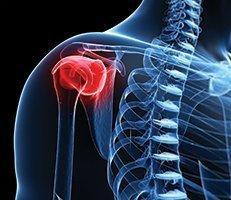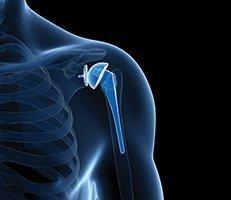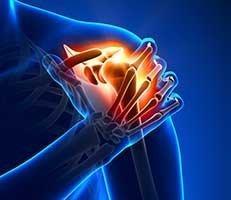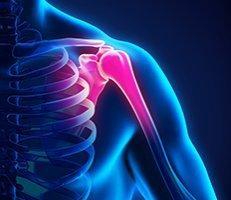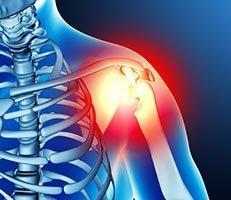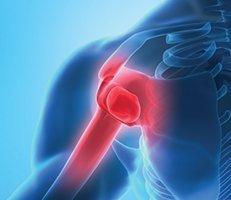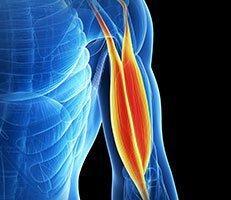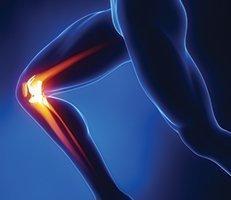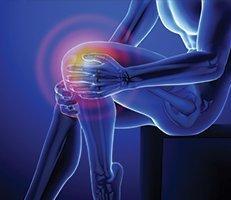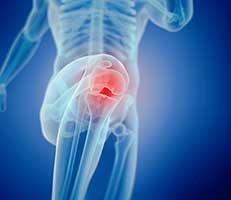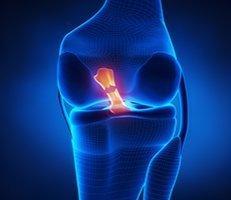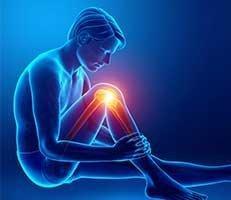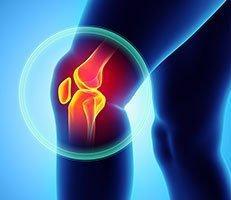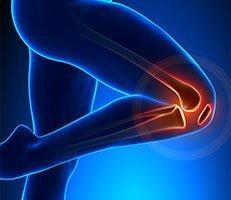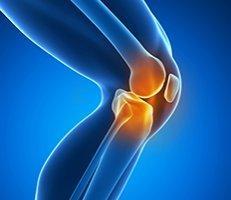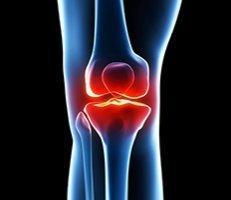An ACL tear is an injury that commonly occurs in athletes who participate in contact sports and other physically-demanding activities. The anterior cruciate ligament (ACL) is an important part of the knee that keeps it stable. If injured, the ACL has a weakened ability to keep the knee in place and assit the knee in smooth movements without the bones of the leg rubbing together.
Anatomy of an Anterior Cruciate Ligament Tear
A ligament is a band of connective tissue that connects bones to other bones, and the ACL is one of the four main ligaments of the knee, providing rotational stability to the joint. The anterior cruciate ligament is part of the knee joint and joins the back of the distal femur (bottom part of the thigh bone, just above the knee joint) to the front of the proximal tibia (upper aspect of the shin bone just above the knee joint). Picture the ACL running diagonally in the middle of the knee, preventing the tibia from sliding out in front of the femur.
What Causes an ACL Tear?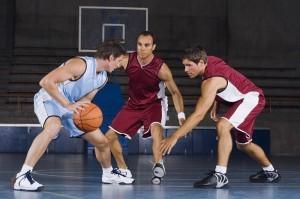 The anterior cruciate ligament is torn as a result of quick acceleration, hyperextension, or rotation out of place (such as a runner on a field having a sudden change of direction). When the ligament tears, athletes generally report a “popping” sound or sensation in the knee. It is estimated that up to seventy percent of ACL injuries occur through non-contact mechanisms, while the other thirty percent result from direct contact from another player or object.
The anterior cruciate ligament is torn as a result of quick acceleration, hyperextension, or rotation out of place (such as a runner on a field having a sudden change of direction). When the ligament tears, athletes generally report a “popping” sound or sensation in the knee. It is estimated that up to seventy percent of ACL injuries occur through non-contact mechanisms, while the other thirty percent result from direct contact from another player or object.
Twisting the knee is the most common cause of an ACL injury. When the hinge joint bends in the wrong direction during a land from a jump or sudden stop, it’s likely to tear. ACL injuries are usually seen in players of contact sports that have many changes of direction or pivoting. These are sports like football, basketball, and skiing, or soccer. Deceleration with quick movement, strange landings after a jump, stepping maneuvers, and plays that generally become out of control increase the risk of an ACL tear in athletes. When any of these movements of the hinge joint are excessive and beyond what the knee can put up with, the anterior cruciate ligament can tear.
Diagnosing an ACL Injury
ACL injuries are evaluated by doctors by first looking for any possible fractures with X-rays. An MRI (magnetic resonance imaging) scan may also be ordered to further investigate the injury and check the surrounding knee ligaments, meniscus cartilage, or articular cartilage.
While medical evaluation of a torn anterior cruciate ligament can often be limited by swelling and pain, a physician should evaluate the injury as soon as possible to get an accurate diagnosis. The physician will first note the position an injured athlete assumes on the examination table, as this can tell him or her a lot about how badly the knee is injured.
Typical symptoms of a torn anterior cruciate ligament include:
- Pain and swelling
- Popping noise in the knee
- The knee literally giving out from under you
- Loss of motion of the knee
- Tenderness along the joint line
- Discomfort while walking
- Inability to bear weight on affected knee
Around fifty percent of all ACL injuries include damage to other structures of the hinge joint, such as the articular cartilage or the meniscus. Directly after an anterior cruciate ligament tear, knee pain can be severe but gradually subside, with symptoms reappearing soon after. If left untreated, a torn ACL can cause serious and permanent damage.
Grading an ACL Tear
An injury to a ligament is considered a “sprain” and is graded on scale that determines severity. Partial tears of the anterior cruciate ligament are very rare, with most tears being complete, or almost complete, tears.
Grade 1 Sprains
The ligament is only mildly damaged in a Grade 1 sprain. The ACL has been slightly stretched but can still keep the hinge joint stable. This is the least severe classification of an ACL tear.
Grade 2 Sprains
A Grade 2 sprain stretches the ligament to a point where it becomes loose. This is considered a partial tear of the ligament. This is a medium-grade sprain and significantly more serious than a Grade 1 tear.
Grade 3 Sprains
A Grade 3 sprain is a complete tear of the ligament. The ligament has been split into two piece, rendering the joint unstable. This is the most severe classification of a sprain and the most serious.
ACL Tear Treatment in Beverly Hills
ACL tears and sprains can be a painful and frightening experience for those who participate in sports or physical activities. With the right diagnosis and treatment, however, a torn ACL is a very treatable condition.
After an ACL injury in Beverly Hills, you may need to rest your leg. Even if you have the ability to walk, you will need to limit activity and avoid bearing weight on the affected knee. Wearing an elastic bandage, using compression, and taking pain medications can help ease the pain and swelling associated with a torn ACL, while strength and motion exercises can also prepare for further treatment and help the healing process.
Ultimately, tear treatment greatly depends upon a patient’s specific injury and condition. Only a physician can determine the best treatment for your ACL injury. If you require treatment for a torn anterior cruciate ligament, please contact a Marina Del Rey ACL doctor today.
Next, learn about common knee injuries.

